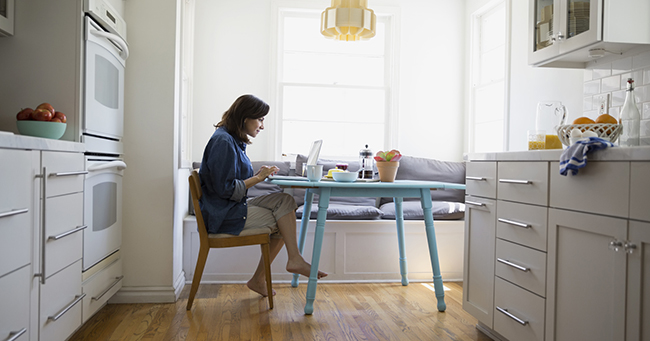
Will we look back on 2020 as a turning point that forced major seismic shifts in how we design, build, and occupy our workplaces? Probably not, but we’re likely to integrate some smart physical and policy changes.
Will we reflect on 2020 as the year that a global virus disrupted our economy, workplaces, and home life and created new channels for working? Absolutely, and newly-established habits are likely to stick.
No doubt as we transition back to some semblance of normalcy in our daily lives, our schedules, productivity, and routines will continue to be challenged. We are more likely to adapt things we can easily control: schedules, technology, and using PPE (funny how quickly that term has become mainstream) rather than making massive changes to our physical environment.
A bend in the path: Corporate offices have been on a trajectory to reduce square footage per seat for some time. There likely will not be a seismic shift that changes that direction any time soon. Given the ways we work (pre-pandemic) it just makes sense to be more efficient. In fact, the potential to reduce the number of on-site employees could result in a further reduction of square footage per headcount in new developments as organizations realize the benefits of a remote workforce and utilize headquarters facilities as central hubs rather than space that accommodates all associates.
The reality of a global pandemic should also lead us to re-think building systems and infrastructure. Mechanical systems with enhanced air cleansing capability, door hardware that can be manipulated with your foot, and antiviral materials used in handrails and high-touch surfaces are all examples of systems that should become the basis of design. While we aren’t likely to see major shifts in the design process, we should shift our strategies to utilize furniture systems that promote social distancing: including workstations that position users and visitors six feet apart and micro-offices that provide floor-to-ceiling glass partitions and doors.
Working from the kitchen table: Many workers are faced with the reality that their office is now the kitchen table and no longer a workspace at the corporate office. Skype, WebEx, and Zoom quickly became the most used applications on computers and it became increasingly difficult to find headsets and upgraded cameras on Amazon. Organizations across the world were immediately faced with the reality that they simply didn’t have the infrastructure and policies in place to support a remote workforce and quickly had to develop strategies to allow their people to work within the new reality.
A look into the future: Let’s fast forward a few years… Much like a densification of our workspace, corporate offices have been moving (albeit it reluctantly and sporadic) toward a more mobile and remote workforce. Most companies believe it just makes sense. This move allows for greater flexibility for a more agile workforce in uncertain times. In this scenario, your headquarters becomes more flexible as a touchdown space for mobile employees and dedicated space only for team members who must be in the office on a regular basis. This is by no means a new concept; however, recent working from home rules have made it overridingly relevant.
We have new channels and habits in place to work more effectively, safely, and help team members navigate their own ever-changing reality. Let’s use them!
Keep it in perspective:
- Don’t do anything drastic. There isn’t a compelling short-term reason to make major physical changes to the physical environment of your workplace.
- While you shouldn’t make any drastic short-term changes, you should build in best practices that make your workplace more hygienic for future projects.
- Focus on the easy solutions. PPE, alternating days, and work schedule modification are all less capital intensive than expanding your real estate footprint.
- Encourage remote work. Almost overnight, your organization has been forced to put the infrastructure and habits in place to support your off-site team. Use it as much as you can to support social distancing and ultimately keep your team members happy and healthy.
About the Author:
Brian Tobiczyk is a Market Executive and the Corporate Market Sector Leader at Mortenson in Milwaukee. A registered Architect highly experienced delivering workplace projects, Brian has a passion for projects that enhance the ways in which people work. To learn more about Brian or contact him directly, please follow the link here.